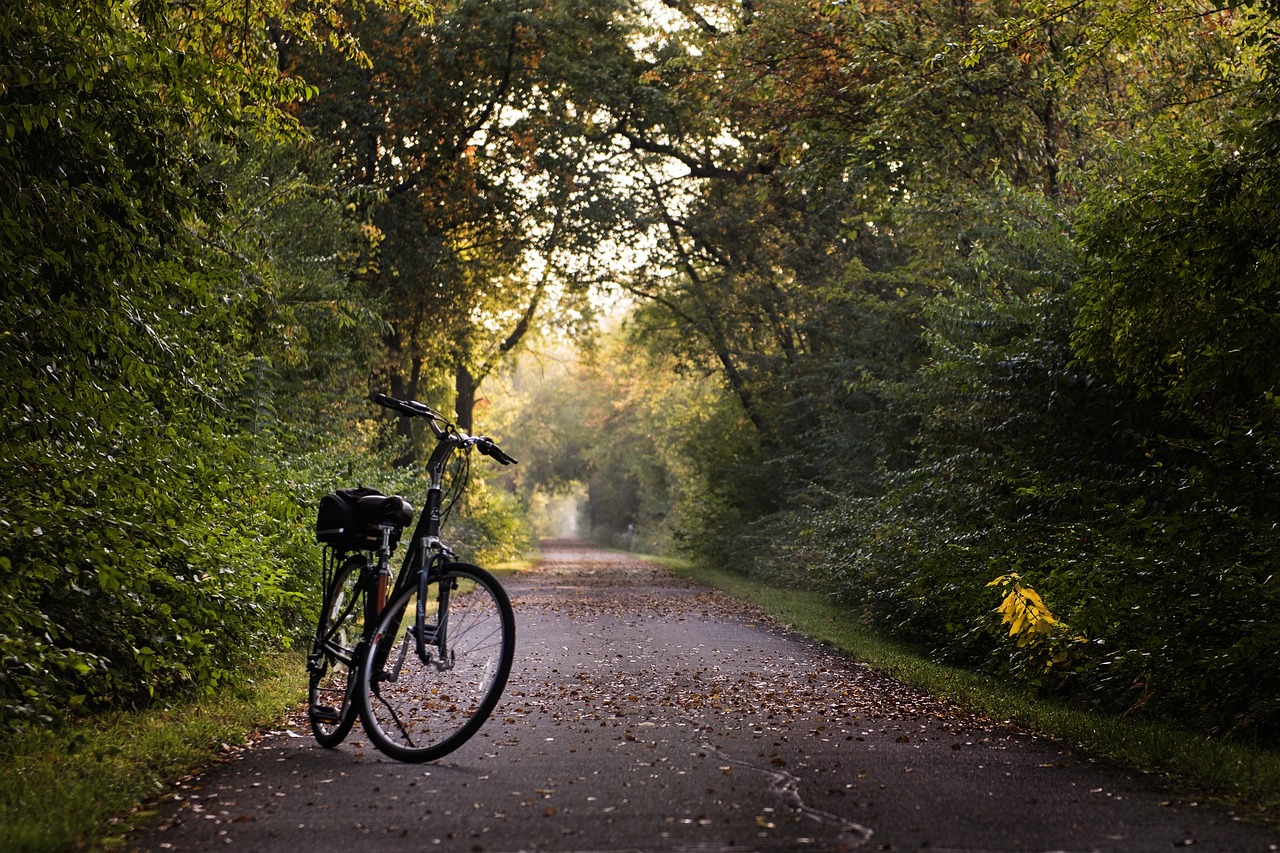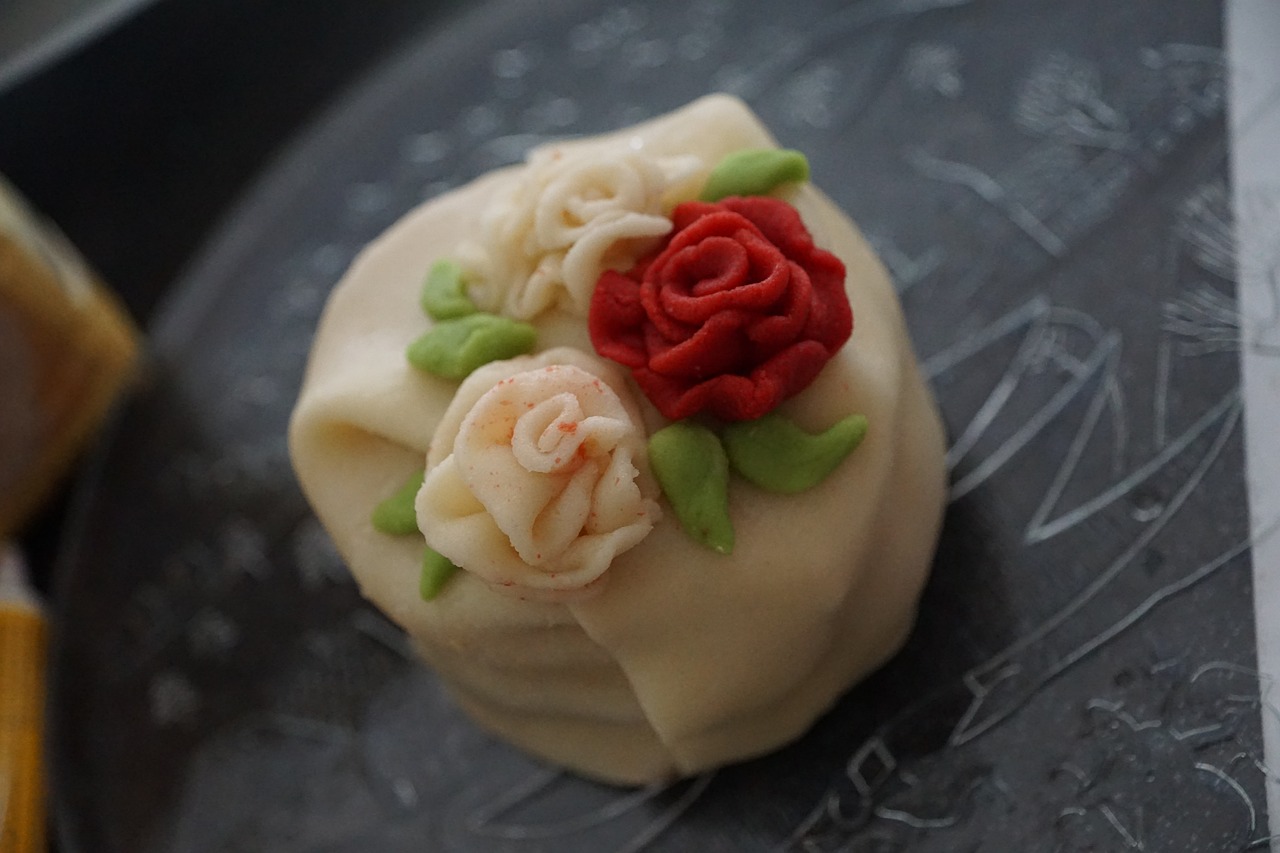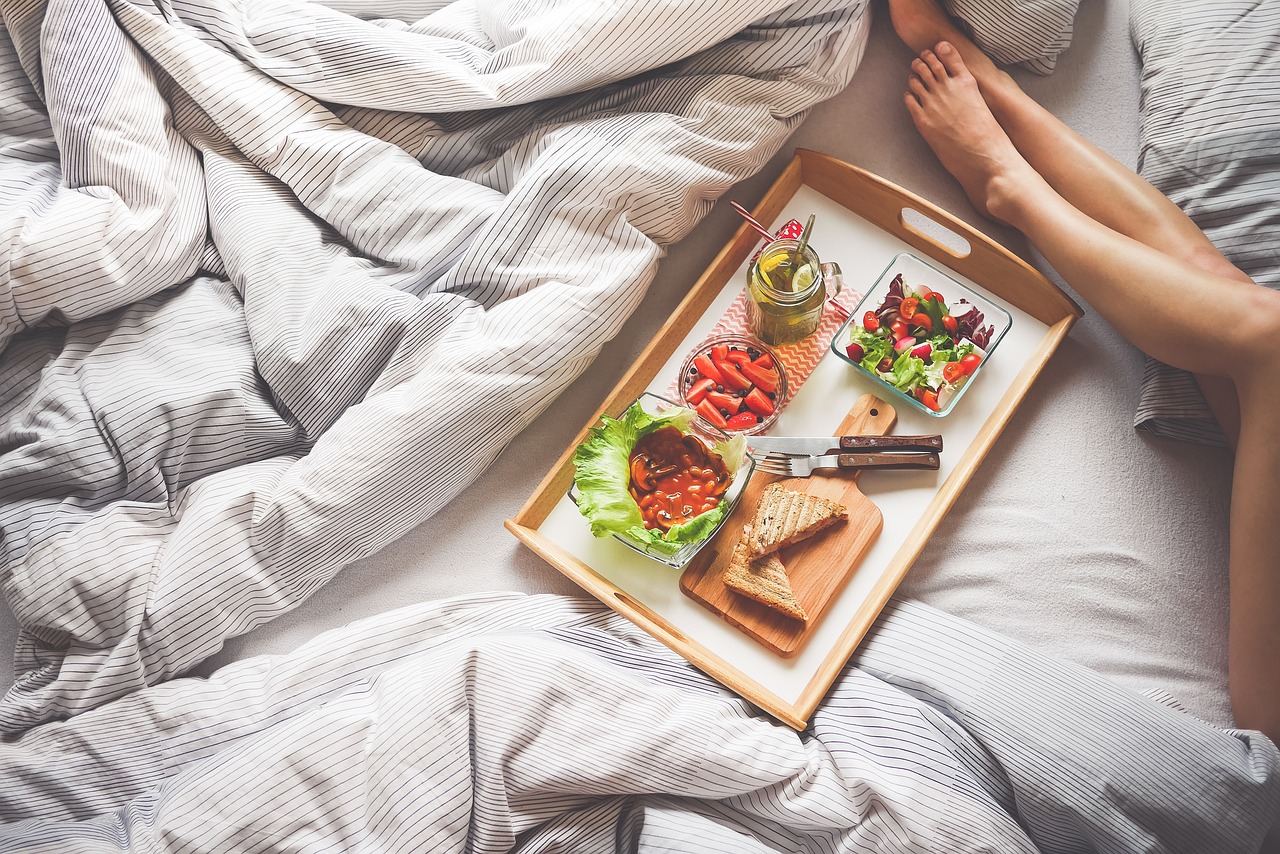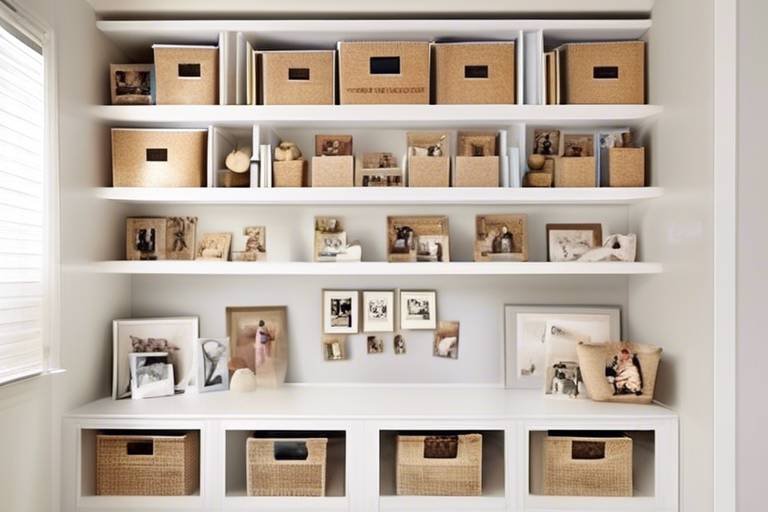Tips for Creating a Minimalist Lifestyle in a Busy World
Living in a fast-paced world filled with constant distractions and demands can make it challenging to find peace and simplicity in our daily lives. However, embracing a minimalist lifestyle can offer a sense of calm and clarity amidst the chaos. By decluttering our living spaces, simplifying our wardrobes, and practicing mindful consumption, we can create a more intentional and fulfilling way of living.
One of the first steps towards a minimalist lifestyle is decluttering your living space. By eliminating unnecessary items and organizing your home effectively, you can create a serene environment that promotes clarity and focus. Clearing out clutter not only creates physical space but also mental space, allowing you to breathe easier and think more clearly.
Embracing mindful consumption is another essential aspect of minimalist living. In a society that constantly bombards us with advertisements and temptations to buy more, learning to make intentional purchases and reduce unnecessary spending is crucial. By focusing on quality over quantity and only buying items that truly add value to your life, you can avoid the trap of mindless consumerism.
Simplifying your wardrobe is also key to creating a minimalist lifestyle. Curating a capsule wardrobe filled with essential pieces that you love and wear often can streamline your daily routine and eliminate decision fatigue. Letting go of excess clothing not only reduces clutter but also allows you to appreciate and utilize the items you truly cherish.
It's important to practice a digital detox regularly to maintain a minimalist mindset. Unplugging from technology, reducing screen time, and prioritizing real-life experiences can help you reconnect with the present moment and improve your mental well-being. By limiting distractions and focusing on meaningful interactions, you can cultivate a greater sense of fulfillment and happiness.
Cultivating gratitude is a powerful tool in the journey towards minimalism. By appreciating what you have and focusing on the blessings in your life, you can reduce the constant desire for more material possessions. Gratitude shifts your perspective from scarcity to abundance, allowing you to find contentment in the present moment.
Choosing experiences over things is another fundamental principle of minimalist living. Instead of accumulating material possessions, focus on creating lasting memories and meaningful connections. Invest your time and resources in activities that bring you joy and fulfillment, rather than in acquiring more stuff that ultimately adds little value to your life.
Creating daily routines that promote productivity, mindfulness, and a sense of calm can help you navigate a busy world with ease. Establishing simple habits like meditation, exercise, and reflection can ground you in the present moment and set a positive tone for your day. By incorporating these routines into your life, you can cultivate a sense of balance and harmony even amidst a hectic schedule.
Setting boundaries and learning to say no are essential skills for maintaining a minimalist lifestyle. By prioritizing your time and energy on what truly matters to you, you can avoid spreading yourself too thin and feeling overwhelmed by non-essential commitments. Saying no to things that do not align with your values or goals allows you to create space for the things that bring you joy and fulfillment.

Declutter Your Living Space
Discover practical advice on simplifying your life and embracing minimalism amidst a hectic schedule.
Living in a clutter-free environment can have a profound impact on your mental well-being. Imagine walking into a room where every item serves a purpose and brings you joy. To achieve this, start by decluttering your living space. Assess each item in your home and ask yourself, "Does this item add value to my life?" If the answer is no, it might be time to let it go. Create designated spaces for essential items and organize your belongings in a way that promotes a sense of peace and serenity.
Consider implementing a minimalist approach to furniture and decor. Opt for sleek, multi-functional pieces that serve a purpose without overwhelming the space. Keep surfaces clear of unnecessary items and embrace a less-is-more mentality when it comes to decorating. A clutter-free living space can create a calming atmosphere and make your home a sanctuary from the chaos of the outside world.
Remember, decluttering is not just about physical possessions; it's also about creating mental space. By simplifying your living environment, you can free your mind from distractions and focus on what truly matters. Embrace the process of letting go of excess stuff and welcome a minimalist lifestyle that prioritizes quality over quantity.

Embrace Mindful Consumption
Discover practical advice on simplifying your life and embracing minimalism amidst a hectic schedule.
In today's fast-paced world, it's easy to get caught up in the cycle of consumerism. Mindful consumption is about being intentional with your purchases and understanding the true value of what you bring into your life. It's not just about buying less; it's about buying with purpose. By embracing mindful consumption, you can reduce waste, save money, and contribute to a more sustainable future.
One way to practice mindful consumption is to evaluate your needs versus wants. Before making a purchase, ask yourself if the item is essential or if it simply adds clutter to your life. By being mindful of what you buy, you can avoid impulse purchases and focus on what truly matters.
Another important aspect of mindful consumption is supporting ethical and sustainable brands. When you choose to buy from companies that prioritize ethical practices and environmental sustainability, you are contributing to positive change in the world. Look for products that are made with care for both people and the planet.
Creating a shopping list and sticking to it can also help you practice mindful consumption. By planning your purchases ahead of time, you can avoid unnecessary spending on items that don't align with your values or needs. This simple practice can prevent impulse buys and keep your home clutter-free.
Remember, mindful consumption is not about depriving yourself; it's about making conscious choices that align with your values and priorities. By being mindful of what you consume, you can lead a more intentional and fulfilling life while reducing your impact on the environment.
If you have any questions about adopting a minimalist lifestyle or practicing mindful consumption, check out the following FAQs:
- How can I start decluttering my home?
- What are some tips for building a minimalist wardrobe?
- How do I resist the urge to make impulse purchases?
- What are the benefits of digital detox?
- How can I cultivate gratitude in my daily life?
- Why is it important to prioritize experiences over material possessions?
- What are some effective daily routines for promoting mindfulness?
- How can setting boundaries and saying no improve my well-being?

Simplify Your Wardrobe
Discover practical advice on simplifying your life and embracing minimalism amidst a hectic schedule.
In today's fast-paced world, simplifying your wardrobe can bring a sense of calm and clarity to your daily routine. By curating essential pieces and letting go of excess clothing, you can create a minimalist wardrobe that reflects your personal style and values.
Consider organizing your clothing items into categories such as tops, bottoms, dresses, and outerwear. This can help you easily see what you have and avoid unnecessary duplication. Embrace a color palette that is versatile and cohesive, allowing you to mix and match effortlessly.
Invest in high-quality, timeless pieces that can be worn in multiple ways and for various occasions. Quality over quantity is key when building a minimalist wardrobe. Before making a new purchase, ask yourself if the item aligns with your style and serves a practical purpose in your daily life.
Creating a capsule wardrobe, consisting of a limited number of interchangeable items, can streamline your dressing process and eliminate decision fatigue. Choose pieces that you love and feel confident in, letting go of items that no longer bring you joy or serve a purpose.
By simplifying your wardrobe, you not only declutter your physical space but also cultivate a sense of mindfulness and intentionality in your daily dressing routine. Embrace a minimalist approach to fashion that focuses on quality, versatility, and personal expression.
Q: How can I decide which clothing items to keep in a minimalist wardrobe?
A: When decluttering your wardrobe, consider the items that you truly love, wear frequently, and align with your personal style. Let go of pieces that no longer fit, are damaged beyond repair, or no longer bring you joy.
Q: Is it necessary to invest in expensive clothing for a minimalist wardrobe?
A: Not necessarily. Focus on investing in high-quality pieces that are durable, versatile, and align with your style preferences. Quality can be found at various price points, so prioritize items that offer longevity and functionality.
Q: How can I maintain a minimalist wardrobe over time?
A: Regularly assess your clothing collection and remove items that no longer serve a purpose or bring you joy. Avoid impulse purchases and carefully consider new additions to ensure they complement your existing wardrobe and align with your minimalist goals.

Practice Digital Detox
Discover practical advice on simplifying your life and embracing minimalism amidst a hectic schedule.
In today's digital age, it's easy to get caught up in the constant buzz of notifications and the allure of endless scrolling. However, practicing a digital detox can be a refreshing way to disconnect from the virtual world and reconnect with the present moment. By setting aside dedicated time to unplug from technology, you can prioritize real-life experiences and improve your mental well-being.
Imagine your mind as a garden that needs tending. Just like plants require sunlight and water to thrive, your mind needs moments of stillness and presence to flourish. A digital detox allows you to give your mind the break it deserves, free from the distractions of screens and notifications.
One effective way to start your digital detox journey is by setting boundaries around your screen time. Consider designating tech-free zones in your home, such as the dining table or bedroom, to promote offline interactions and relaxation. Additionally, establish specific times of the day when you disconnect from devices completely, allowing yourself to fully engage in activities that bring you joy and fulfillment.
Engaging in activities that don't involve screens can help you rediscover the beauty of the world around you. Whether it's going for a nature walk, reading a physical book, or engaging in a hobby, embracing analog experiences can reignite your sense of wonder and creativity. By stepping away from the digital noise, you create space for introspection and mindfulness, leading to a greater appreciation for the present moment.
Remember, a digital detox is not about completely eliminating technology from your life but rather finding a healthy balance that allows you to use technology mindfully. By consciously choosing when and how to engage with digital devices, you can reclaim control over your time and focus on what truly matters to you.

Cultivate Gratitude
Gratitude is like a seed that, when nurtured, blossoms into a beautiful garden of positivity in our lives. It is the art of appreciating what we have rather than focusing on what we lack. Cultivating gratitude involves acknowledging the blessings, big or small, that enrich our daily experiences. By shifting our perspective towards gratitude, we can cultivate a mindset of abundance and contentment amidst the chaos of our busy lives.
Imagine gratitude as a beacon of light that illuminates even the darkest corners of our minds, bringing warmth and comfort. It allows us to see the silver linings in challenging situations and find joy in the simple pleasures that often go unnoticed. Practicing gratitude is not about denying difficulties but rather about acknowledging the good that coexists with them.
One way to cultivate gratitude is through a gratitude journal, where you can reflect on and write down things you are thankful for each day. This simple practice can shift your focus towards the positive aspects of your life, fostering a sense of appreciation and mindfulness. Additionally, expressing gratitude towards others through kind words or gestures can strengthen relationships and create a ripple effect of positivity.
In a world that constantly bombards us with messages of scarcity and comparison, cultivating gratitude is a powerful antidote. It reminds us to pause, breathe, and appreciate the present moment, regardless of the chaos swirling around us. By nurturing a spirit of gratitude, we can cultivate a sense of peace and fulfillment that transcends material possessions and external circumstances.

Focus on Experiences Over Things
Discover practical advice on simplifying your life and embracing minimalism amidst a hectic schedule.
When it comes to living a minimalist lifestyle, one of the key principles is shifting your focus from acquiring material possessions to cherishing experiences. Imagine your life as a canvas, waiting to be filled with vibrant colors of memories and adventures. Instead of accumulating more stuff that eventually loses its shine, invest in moments that create lasting impressions on your heart.
Think about it this way - would you rather have a closet full of clothes you rarely wear or a collection of memories from traveling to new places, trying new activities, and spending quality time with loved ones? By prioritizing experiences over things, you not only declutter your physical space but also enrich your life with meaningful stories and moments that bring genuine happiness.
Consider creating a bucket list of experiences you wish to have, whether it's learning a new skill, exploring a different culture, or simply enjoying a quiet sunset by the beach. These experiences not only add value to your life but also shape your identity and perspective in ways material possessions cannot.
Remember, the joy of a new gadget fades quickly, but the joy of a shared laugh with friends or the awe of witnessing a breathtaking natural phenomenon stays with you forever. Embrace the beauty of living in the moment, savoring each experience as a precious gift that money can't buy.
Stay tuned for answers to common questions about minimalist living and practical tips for incorporating minimalism into your daily routine.

Create Daily Routines
Creating daily routines is like building a strong foundation for a house. It provides structure, stability, and a sense of order in the midst of chaos. Imagine each routine as a brick, carefully placed to construct a solid structure that supports your day. Whether it's starting your morning with a calming cup of tea, taking a brisk walk during lunch break, or winding down with a good book before bed, these routines shape your day and set the tone for how you navigate through life's challenges.
Think of your daily routines as rituals that help you stay grounded and centered in a fast-paced world. They act as anchors, keeping you rooted in the present moment and guiding you through the ebb and flow of daily life. By incorporating simple yet meaningful rituals into your day, you create pockets of tranquility and mindfulness amidst the hustle and bustle.
Consider establishing a morning routine that kickstarts your day on a positive note. This could involve activities like meditation, journaling, or a light workout to energize both your body and mind. By setting aside time each morning for self-care and reflection, you cultivate a sense of purpose and intention that carries you through the day.
Throughout the day, weave in small rituals that help you stay focused and productive. Whether it's taking short breaks to stretch and recharge, practicing deep breathing exercises to alleviate stress, or creating a to-do list to stay organized, these rituals enhance your efficiency and well-being.
As evening approaches, wind down with calming rituals that signal to your body and mind that it's time to relax. This could involve a soothing skincare routine, sipping herbal tea, or engaging in a quiet activity that promotes relaxation. By consciously transitioning from the busyness of the day to a state of rest, you prepare yourself for a restful night's sleep.
Remember, daily routines are not meant to be rigid or restrictive. They should adapt to your needs and evolve as you grow and change. Flexibility is key in maintaining sustainable routines that support your well-being and productivity. Embrace the power of daily rituals to cultivate a sense of balance, purpose, and harmony in your life.

Set Boundaries and Say No
Setting boundaries and learning to say no are essential skills in creating a minimalist lifestyle that prioritizes what truly matters. Just like a garden needs a fence to protect it from unwanted intruders, setting boundaries is like creating a safe space for your time and energy. Saying no is not a negative act; it's a powerful tool to protect your priorities and focus on what brings value to your life.
Imagine your time and energy as precious resources that need to be allocated wisely. By setting boundaries, you are defining the limits of your availability and avoiding overcommitment. It's like creating a schedule for your life where you decide what activities deserve a spot. Saying no is not about being selfish; it's about respecting your own needs and priorities.
When you learn to set boundaries and say no, you are reclaiming control over your life. It's like being the captain of your own ship, steering it towards the destinations that truly matter to you. By setting clear boundaries, you are communicating your values and priorities to others, creating a harmonious balance between giving and receiving.
Setting boundaries and saying no also help in reducing stress and overwhelm. Just like a cluttered room can cause mental chaos, a cluttered schedule can lead to emotional exhaustion. By prioritizing your time and commitments, you are creating a sense of order and peace in your daily life.
Remember, it's okay to say no to things that do not align with your goals and values. Just as a sculptor chips away the excess to reveal the masterpiece within, saying no allows you to focus on what truly matters and brings you closer to your ideal minimalist lifestyle.
Setting boundaries and saying no are not acts of rejection but acts of self-care and empowerment. It's about choosing quality over quantity, depth over superficiality, and fulfillment over obligation. Embrace the power of setting boundaries and saying no to create a life that is aligned with your authentic self.
Frequently Asked Questions
- What is minimalism and why is it beneficial?
Minimalism is a lifestyle that focuses on owning fewer material possessions and simplifying various aspects of life. It promotes intentionality, mindfulness, and a greater appreciation for what truly matters. By decluttering your physical space and reducing unnecessary distractions, minimalism can lead to reduced stress, increased clarity, and a sense of freedom.
- How can I start decluttering my living space?
To begin decluttering your living space, start by identifying items that you no longer use or need. Sort through your belongings and categorize them into keep, donate/sell, or discard piles. Consider the value each item adds to your life and prioritize keeping only the essentials. Organize your remaining belongings in a way that promotes a clean and minimalist environment.
- What are some tips for simplifying my wardrobe?
To simplify your wardrobe, assess your current clothing items and identify pieces that you truly love and wear regularly. Consider creating a capsule wardrobe consisting of versatile, high-quality pieces that can be mixed and matched easily. Donate or sell clothing that no longer serves you and avoid purchasing items on impulse to maintain a minimalist wardrobe.
- How can I practice a digital detox effectively?
To practice a digital detox, set designated times during the day to disconnect from electronic devices and engage in offline activities. Limit your screen time, especially before bedtime, and establish boundaries for technology use. Engage in hobbies, spend time outdoors, and prioritize face-to-face interactions to reduce dependency on digital devices and promote mental well-being.
- Why is cultivating gratitude important in a minimalist lifestyle?
Cultivating gratitude is essential in a minimalist lifestyle as it shifts focus from what is lacking to appreciating what you already have. Gratitude fosters contentment, reduces the desire for excessive material possessions, and promotes a mindset of abundance. By practicing gratitude daily, you can enhance your overall well-being and find joy in simplicity.



















